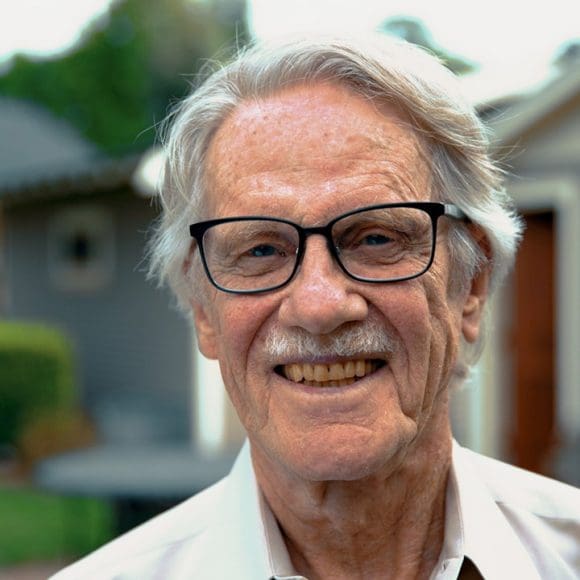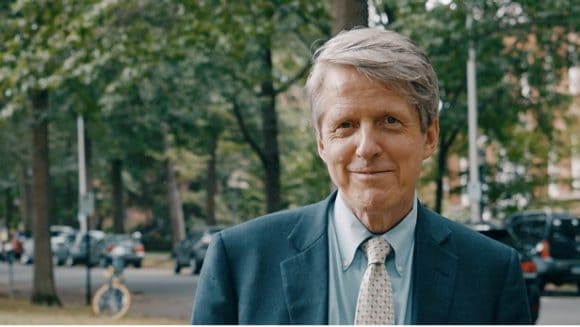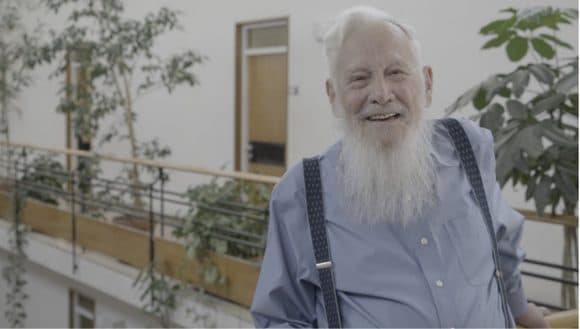Vernon L. Smith
Nobel 2002 | What can experiments tell us about the real-world?
If you come across a "Do not enter: experiment in progress" sign on a university campus, it’s unlikely you find yourself at the Department of Economics. That is, until Vernon Smith came along and changed it. Until relatively recently, experiments weren’t the way to empirically verify a theory in economics. What’s more, there weren’t any labs in economics departments to run any experiments. Vernon Smith, Professor of Economics at Chapman University changed everything as he set out on a mission to understand why and how markets reach competitive equilibrium.

Vernon L. Smith
Vernon L. Smith
The Sveriges Riksbank Prize in Economic Sciences in Memory of Alfred Nobel (shared), 2002
At a glance
At a glance
Born: 1927, Wichita, Kansas, USA
Field: Economic psychology, experimental economics
Prize-winning work: Establishing laboratory experiments as a tool in empirical economic analysis, specifically in the study of alternative market mechanisms
Symbolic accessories: Hopi rings and a belt-buckle
Considers himself: A philosopher and empiricist
Age he started paying into a retirement plan: 13
Way to stay fit: Daily walks to and from the office
A nod to his rustic countryside upbringing: Growing potatoes in an urban allotment
The founding father of experimental economics
The founding father of experimental economics
We all learn in school, or later in life, that at the point where supply and demand graphs meet, the market reaches an equilibrium. Smith put this core concept in economics to the test, and through experiments wasn’t only able to show that it works, but also proved how. And so, the field of experimental economics was born.
How experiments meet economics
Has this question inspired you?
Has this question inspired you?
Get the latest Nobel perspectives delivered to you.
Learning about how markets function
Learning about how markets function
While testing and demonstrating core concepts of economics that are usually taken for granted, Vernon Smith proved himself (and many other scholars) wrong. In fact, most economists, at the time when he embarked on the journey of bringing experimental methods to economics, believed that the standard theory of supply and demand was an abstract ideal. The competitive equilibrium in this model would only be possible if people have complete information about the market, which never happens in practice. Similarly, the number of participants in the market needs to be rather high, which limits the number of markets that can be potentially considered, and dooms any attempt at an experiment.
Yet, Smith set up the experiment so that the participants - the students in his Introductory Economics class - wouldn’t have more information about the market’s workings besides "their own particular circumstances, how much they’re willing to pay for something or how much they want to sell something for". They were divided into buyers and sellers, they traded for a few rounds and lo and behold, their market reached competitive equilibrium. Each buyer and seller agreed with each other on a price that was equally satisfactory in terms of profits made and left no need to trade further.
The educational merits of being wrong
Since then, experiments designed and conducted by Smith have shed light on issues in finance, natural resource economics, behavioral economics and operations research. The Nobel Committee awarded Smith with the Prize in 2002 for this crucial body of work and establishing the field of experimental economics. What mattered to Smith himself, apart from understanding how the market reaches equilibrium, is learning by proving himself wrong.
Proving himself wrong
Proving himself wrong
"I think you always learn the most when you turn out to be wrong." The economist pauses to let the train pass by his house in Orange, California, on the same track he traveled in 1945 on the way from Wichita, Kansas to Caltech to pursue his studies. "Coming to terms with your own flawed beliefs is the greatest learning experience you can have. And yet, none of us naturally do that. My first reaction to my first experiment was to think something was wrong with it. Not to realize I’d have to re-examine my beliefs," says Smith.
A life-long journey of self-education
A life-long journey of self-education
The journey began in a one room schoolhouse. Upon completing his own tasks as a first-grader, seven-year-old Vernon Smith embarked on the lifelong adventure of self-education: he’d study along with the second-grade class sitting next to him and learn their material too.
I believe that all learning is ultimately a form of self-education. That formal schooling is simply a way of introducing you to how to learn. And I think, at some point in my own education, I realized that the most important thing I was learning was that I was learning to learn. It became a lifelong endeavor.
How do people create market bubbles?
How do people create market bubbles?
Laboratories are a great place to simulate phenomena that are otherwise dangerous for a society, such as housing bubbles.
A collapse in the housing market is far more devastating than a collapse in the stock market. Because the number of people in the stock market is relatively small, compared with the number of people who own a home in the United States.
A collapse occurs when people get caught up in unrealistic expectations that the asset prices will continue to grow way above their true value; an environment that Smith and his colleagues were able to create in the lab.
The experiment paid off: the bubbles disappear among people who have experience with asset markets. "If you bring the same group back to the laboratory, they walk in and see these familiar faces a couple of days later. After they’ve returned a few more times, the bubble gradually disappears: people start to trade close to the fundamental value. They get there not by logic or rational thought, but by experience. I think that’s the way most people in the economy act. What they believe about markets is driven by their experience," says the laureate.
Why housing bubbles are devastating and how to prevent them
Has this question inspired you?
Has this question inspired you?
Get the latest Nobel perspectives delivered to you.
Fit in body and mind
Fit in body and mind
Sharing a walk to his office at Chapman University with this outstandingly fit and energetic 88-year-old gentleman is a lesson in itself: keeping the body fit might be the key to keeping the mind young as well. Every morning he walks to his office, an oddity in a culture where driving even a short distance to work is a norm. Walking provides mental fitness in preparation for a full day ahead. He has lab experiments to supervise, a new project on the development of water markets in California and a forthcoming book that reconnects Adam Smith’s philosophy to the way people behave in his experiments.
The never-ending source of curiosity
Former graduate student and now colleague Bart Wilson jokes that he’s curious about Vernon Smith’s big secret too. Because there must be some formula for this longevity, incredible focus and curiosity about a variety of matters beyond economics. On a more serious note, he concludes: "There’s a quote by Wittgenstein that really summarizes Vernon. ‘There is no more light in a genius than in any other honest man, except that he has that particular kind of lens to focus that light into a burning point’." Perhaps Smith’s secret is much simpler: life is one big experiment, so you must always be on your toes; always ready for the next chance to learn something.
Why do countries have to find better ways to grow?
Why do countries have to find better ways to grow?
Hear Michael Spence's view on how countries can grow sustainably while having a long-lasting positive impact.
Has this question inspired you?
Has this question inspired you?
Get the latest Nobel Perspectives updates delivered to you.


